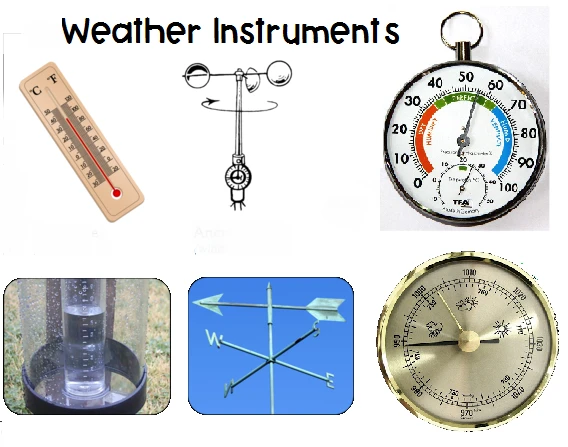
# The Instruments of the Weather
## Understanding Weather Instruments
Weather instruments are essential tools used by meteorologists and weather enthusiasts to measure and predict atmospheric conditions. These devices help us understand the complex dynamics of our planet’s weather systems, providing valuable data for forecasts, research, and daily planning.
### The Most Common Weather Instruments
Several key instruments form the backbone of weather observation:
– Thermometer: Measures air temperature
– Barometer: Detects atmospheric pressure
– Hygrometer: Determines humidity levels
– Anemometer: Records wind speed
– Wind vane: Shows wind direction
– Rain gauge: Measures precipitation
## How These Instruments Work Together
Modern weather stations often combine multiple instruments into integrated systems. These devices work in harmony to provide a comprehensive picture of current weather conditions. For example, when a barometer shows falling pressure while a hygrometer indicates increasing humidity, it often signals approaching rain.
### Advanced Weather Measurement Tools
Beyond the basic instruments, meteorologists use more sophisticated equipment:
– Radiosondes: Weather balloons carrying instrument packages
– Doppler radar: Detects precipitation and wind patterns
– Satellite imagery: Provides large-scale weather system views
– Lightning detectors: Track electrical storm activity
## The Importance of Accurate Measurements
Precise weather instruments are crucial for:
– Aviation safety
– Agricultural planning
– Severe weather warnings
– Climate change research
– Daily weather forecasts
Proper calibration and maintenance of these instruments ensure reliable data collection over time, allowing scientists to track weather patterns and climate trends accurately.
## Choosing Weather Instruments for Home Use
Many weather enthusiasts set up personal weather stations. When selecting instruments, consider:
– Accuracy requirements
– Durability in local conditions
– Data recording capabilities
– Connectivity options (Wi-Fi, Bluetooth)
– Power sources (battery, solar)
Quality home weather stations can provide surprisingly professional-level data when properly installed and maintained.
## The Future of Weather Instruments
Technological advancements continue to improve weather instrumentation:
– Miniaturization allows for more portable devices
– Increased automation reduces human error
– Enhanced connectivity enables real-time data sharing
– Improved sensors provide greater accuracy
– AI integration helps with pattern recognition
These innovations promise even better weather prediction capabilities in the coming years, helping us prepare for and respond to atmospheric changes more effectively.
Keyword: instruments of the weather